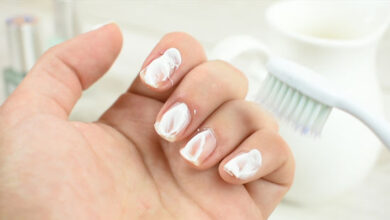Flies can be a nuisance, especially when they intrude on outdoor activities. We consulted with experts to discover effective ways to manage fly populations and keep them at bay.
No one wants flies buzzing around their face or landing on their food, especially considering the germs they carry. The most common types encountered around homes are houseflies and blow flies, both categorized as “filth flies” by scientists.
While dealing with a few flies is manageable, tackling an infestation requires a strategic approach. Our experts shed light on the causes of fly infestations and shared effective methods for eliminating them from outdoor spaces around your home.
What Types of Flies Exist?
There are over 120,000 species of flies worldwide, with around 18,000 common species found in North America. Some of these include:
- – House flies
- – Stable flies
- – Green bottle flies
- – Black flies
- – Cluster flies
- – Horseflies
- – Fruit flies
- – Mayflies
Where do Flies Come From?
Flies typically originate outdoors and find their way into homes through damaged doors, windows, or torn screens. They lay their eggs in places like garbage cans, compost piles, animal waste, and decaying organic matter. Despite their short lifespans, flies reproduce rapidly. A female fly can lay between 75 and 150 eggs at a time.
- Houseflies are widespread due to their rapid reproduction rates and can travel up to 20 miles from where they hatched, although they usually stay within a mile of their birthplace.
- Fruit flies are commonly found indoors as they’re attracted to food waste. They often enter homes along with fruits and other perishable items.
- Horseflies typically remain outdoors but may accidentally enter homes through open windows.
Recognizing a Fly Infestation
When flies start to outnumber your fly swatter, it’s time to spot the signs of a potential infestation. Look out for these indicators:
1. Larvae Presence
Keep an eye out for small white worms, known as larvae or maggots, especially in areas like your trash can or on organic waste such as animal droppings or deceased animals.
Even if you don’t see them directly, the movement of trash or a congregation of larvae on your driveway or patio might indicate their presence as they undergo metamorphosis.
2. Presence of Yellow Jackets or Paper Wasps
These scavenging insects are drawn to the same food sources as flies. If you notice an increase in yellow jackets or paper wasps around your property, particularly near areas with rotting meat or organic waste, it could indicate a fly infestation. These insects may also feed on fly larvae if the conditions are favorable.
3. Imagine a lively airborne celebration
After a certain temperature threshold is reached, young adult flies emerge anywhere from a few days to several weeks later. That’s when you’ll spot them darting around outside, exploring for food and mingling to start a new cycle of breeding.
Tips for Keeping Flies Away Outdoors
To deter flies from bothering your outdoor areas, experts suggest the following methods:
1. Fly Traps
These devices are designed to attract and capture flies, preventing them from escaping. They are readily available online or at hardware stores. You can either buy traps ready to use or fill them with attractants like chicken bones.
Some traps come preloaded with organic compounds like putrescine and cadaverine, which emit foul odors that attract flies. While placing traps away from your patio or deck won’t eliminate flies entirely, it can significantly reduce their presence.
2. Fly Tape
This sticky tape is effective for catching flies, especially in areas like garages or near backyard chicken coops. You can discreetly place strips of fly tape around corners or near downspouts to avoid detracting from your outdoor aesthetic. Flies are attracted to the tape because they like to perch on dangling objects while resting.
3. Spiders
Instead of squashing these eight-legged architects, consider keeping them around to assist in controlling flies outdoors.
According to a study, spiders worldwide consume a staggering 400 to 800 million tons of insects and other pests annually—equivalent to twice the protein intake of humans from meat and fish.
If you notice webs on your porch or patio without spiders, feel free to remove them, as most spiders rebuild their webs daily to catch prey.
4. Tiny Wasps
Parasitoid wasps are another effective option. These insect allies, about the size of ants, are harmless to humans but lethal to flies.
They feed on pollen and nectar from flowers and do not sting or build nests. Moreover, they have no interest in invading your home or raiding your meals.
Their mission? To seek out fly pupae. The female wasp lays her eggs inside a fly pupa, providing a ready-made meal for her offspring. As they continue this cycle, they help control fly populations effectively.
5.Scents
While essential oils can repel flies, they may come with drawbacks. They can be costly and emit strong odors, which might not be pleasant when you’re trying to enjoy your outdoor space. This might be off-putting, particularly during meals or social gatherings.
6. Candles
Citronella candles are often suggested to keep flies away, but their effectiveness is debated. While mosquitoes are repelled by the smoke and scent of these candles, flies are less bothered by it.
In essence, citronella candles offer some level of protection against flies, but they are not as effective as they are for mosquitoes.
7. Mitigating Food Sources
The primary strategy to combat flies is to remove their sources of attraction. Flies are drawn to food and breeding grounds, so eliminating these factors is crucial. Note that if you leave out enticing items, flies will be naturally drawn to them.
For instance, if your trash can contains food residue that attracts flies, make sure to rinse it out regularly. The water used for rinsing can be safely disposed of on pavement or soil, where natural microbial activity can neutralize harmful microbes.
Additionally, if blow flies are congregating around pet waste in your yard, it’s advisable to clean it up promptly to prevent them from laying eggs and exacerbating the issue.
In cases where an animal carcass is present nearby, seeking professional assistance or contacting animal control for removal is recommended to prevent further attraction of flies.
What Not to Use to Get Rid of Flies
Bug Zapper
Using a bug zapper to eliminate flies is not recommended. Although bug zappers are designed to attract and kill insects using UV or fluorescent light and electrified wires, they also kill many beneficial insects, such as butterflies and moths.
Given the global decline in insect diversity, it’s crucial to avoid non-selective methods like bug zappers. Instead, consider using fly traps that specifically attract and kill flies using organic material or pheromones.
Fans
Fans might seem like a good idea to keep flies away from food at events, but they are not very effective. Flies are strong fliers and can easily withstand windy conditions that would deter other insects. So, using fans to shoo flies away is unlikely to work.
Birds
Encouraging birds to visit your yard in hopes of controlling flies is another ineffective method. Most birds are not primarily insectivorous and prefer seeds, fruits, and plant shoots. Therefore, relying on birds to significantly reduce fly populations is not a viable solution.
Bats
While bats are excellent for controlling mosquitoes, they are not effective against flies. Bats are nocturnal and hunt at night, whereas most flies, such as house flies and filth flies, are active during the day. Therefore, bats won’t help with your fly problem.
Vodka in Bags
The idea of using bags of vodka to repel flies is a myth. Research has debunked this old wives’ tale, showing that vodka-filled bags do not repel flies. In fact, they might attract fruit flies, making the problem worse.




